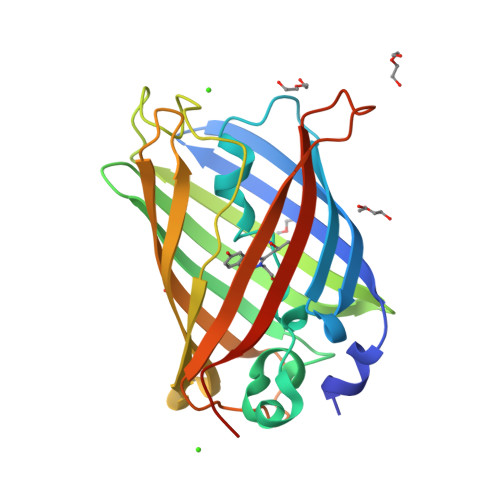Life scientists are increasingly using recombinant genes in a variety of applications, such as mRNA vaccine development, protein and antibody engineering, cell and gene therapy, and much more. Therefore, it’s becoming more and more important to create tools to help scientists to assemble large gene constructs quickly and accurately.
Chemical synthesis has been historically used to generate oligonucleotides but the method generates large amounts of hazardous waste. While chemical synthesis boasts a seemingly good coupling efficiency of 99.4%, repeated rounds of synthesis synthesis generate more and more unwanted byproducts. This makes it difficult, if not impossible to create larger and larger oligos that would facilitate DNA assembly. But thanks to newer technologies, scientists can now synthesize larger oligos with ease.
Meet Enzymatic DNA synthesis.
DNA Script’s Enzymatic DNA Synthesis (EDS) technology uses the DNA Terminal Deoxynucleotidyl Transferase (TDT) enzyme to create longer oligonucleotides more accurately and efficiently. The ability to generate these oligos has aided DNA assembly techniques such as Gibson assembly or polymerase cycling assembly (PCA) for assembling genes. By giving flexibility in oligo design, longer oligos can help “hide” complicated regions within the oligo sequence and if you’ve had failed or rejected sequences, EDS might work for you.
What is Polymerase Cycling Assembly?
Polymerase cycling assembly is also known as assembly PCR and polymerase chain assembly. This method assembles short oligos into kilobase-sized DNA fragments using overlapping ssDNA oligos and one to three rounds of PCR.
During a 2-step PCA protocol, the first round of PCR assembles the overlapping fragments anneal to one another and PCR extends these oligos. Then, primers that anneal to the ends of the gene amplifies the entire target sequence. This sequence is then error corrected using cocktails of enzymes such as the CorrectASE (Thermo Fisher Scientfic) or Authenticase® (New England Biolabs). A last round of PCR reassembles the corrected fragments.
A 1-step PCA protocol is similar to the 2-step protocol except it eliminates the second round of PCR before error correction. While a 1-step method is faster and cheaper, it’s limited to shorter and simpler gene fragments. A 2-step method is longer and more expensive, but it is more accurate with better performance on long gene fragments over 1 kb.
PCA has many advantages including:
- A template-independent synthesis. PCA can produce synthetic genes or genomes without the need for a template.
- A fast protocol. The entire protocol takes 2-3 days from receiving oligo sequences to obtain your assembly.
A high success rate. We have found that the rate of obtaining a perfectly sequenced clone is as high as 1 in 4 clones without phenotypic screening and 4 in 5 clones with phenotypic screening.
PCA Protocol
Our PCA protocol includes three main steps: (1) oligo nucleotide design and synthesis, (2) gene assembly and error correction, and (3) cloning and sequence verification (Figure 1). We take a high-level look at each step below, but you can find the full PCA protocol in our DIY Gene Assembly by PCA Quick Guide.
(1) Oligonucleotide design and synthesis: Depending on the size of the gene you are assembling, you may want to assemble separate gene blocks using PCA and then assemble the overlapping blocks into the vector. If using blocks, the NEBuilder assembly tool 2.0 can be helpful to design blocks. To design oligos, you can use software such as the DNAWorks oligo design software where you can specify oligo length and annealing temperature. Lastly, design PCR primers at the 5’ and 3’ end of your construct for amplification. If using gene blocks, you’ll need to design a primer to amplify each block. Oligos can be printed in your own lab with the DNA Script SYNTAX Platform or ordered from DNA Script using our ssDNA On-Demand Service.
(2) Gene assembly and error correction: Gene assembly and error correction is performed as described in Figure 1. The exact parameters for PCR and error correction can be found on our DIY Gene Assembly by PCA Quick Guide.
(3) Cloning and sequence verification: Once you have assembled your gene, the next step is to get it into a cloning vector and transform it into bacteria. Here, you proceed like any other cloning experiment – pick colonies and sequence the construct.
Example Data: Gene Assembly using EDS and PCA
We put EDS oligos to the test in several proof-of-concept experiments where we assembled three genes: EGFP, mRFP, and hemagglutinin (HA). We synthesized and verified each assembly in a slightly different way, showcasing the flexibility of PCA.
- mRFP: We began with assembly of mRFP from 24 oligos (each between 25 and 56 nt) using a 1-step PCA method and placed these into a vector that supports mRFP expression. This meant that we could use phenotype (red colonies) to help increase the success rate of picking clones with a perfect mRFP sequence. This method allowed us to reach success rates of 4 in 5 colonies.
- EGFP: Because not all gene syntheses use genes that have a phenotype associated with its expression, we cloned EGFP (synthesized from a 2-step PCA method) into a sequencing vector that does not support expression of EGFP. Using this method, starting with 20 oligos (each between 48 and 58 nt), we achieved a success rate of 1 in 4 EGFP clones having a perfect EGFP sequence.
- HA: Lastly, we chose to assemble the HA gene as it is a larger gene compared to the two reporters above (1,698 bp vs. ~700 bp). This synthesis began with the assembly of three blocks that were then pieced together into the vector. We did two synthesis reactions, one beginning with 60-mer oligos and the other with 120-mer oligos. We showed that not only could we perform PCA this way, but also that 120-mer oligos could provide slightly higher success rates. Assemblies beginning with 60-mer oligos produced a success rate of 1 in 6 clones with a perfect HA sequence while assemblies using 120-mer oligos had a success rate of 1 in 5 clones with a perfect HA sequence.
We found that the PCA protocol is highly flexible and customizable to the needs of a specific experiment including handling various cloning vectors, strains, PCA methods, screening methods, and sequencing strategies. To see the full methods and results, download the complete application note below.
Discover our EDS ssDNA



![[Webinar Recap] New Approaches to Gene Construction Using Our Enzymatic DNA Synthesis](https://www.dnascript.com/wp-content/uploads/2025/06/Design-sans-titre-300x300.jpg)